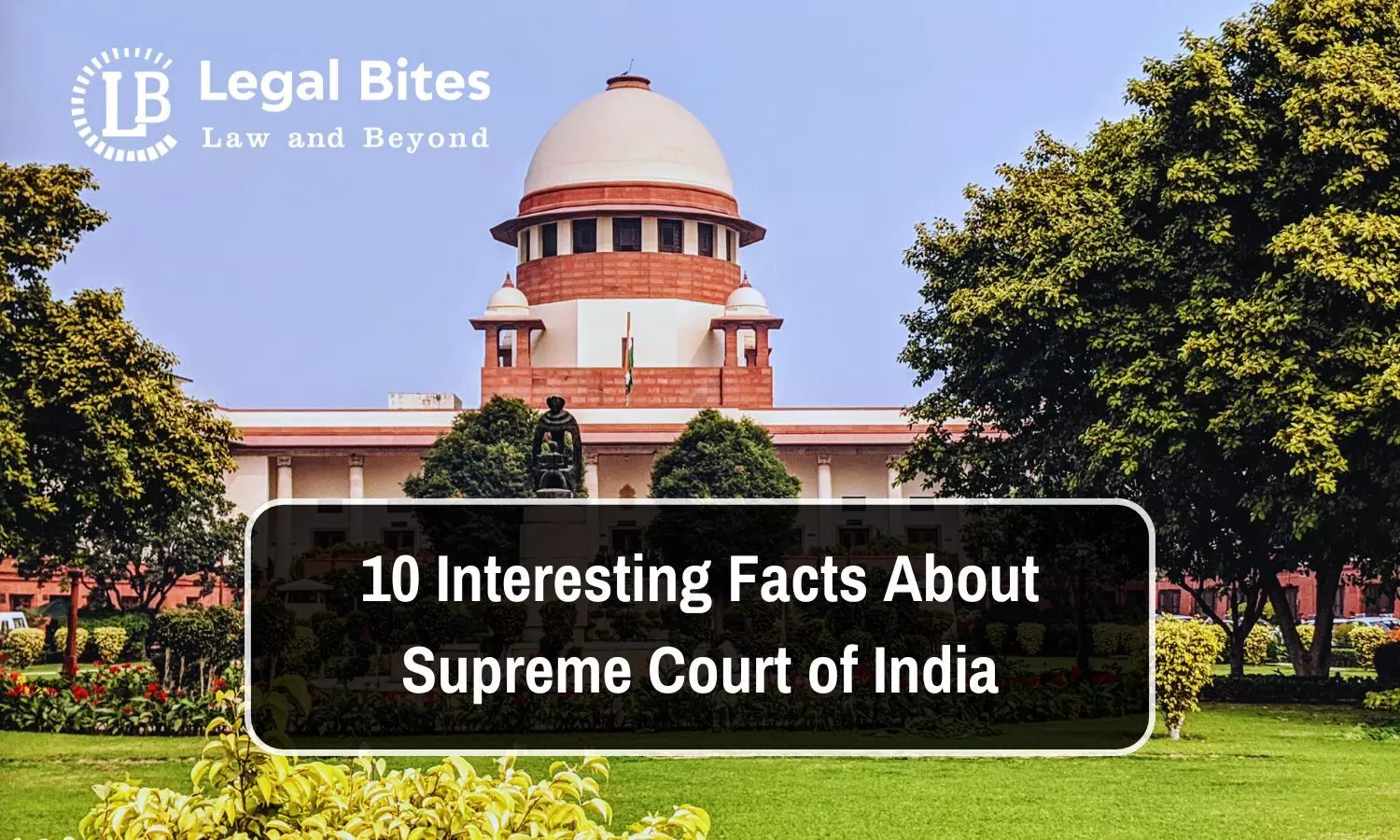10 Interesting Facts About Supreme Court of India
Explore the grandeur of the Supreme Court of India, showcasing its historic Indo-British architecture amidst lush greenery.

The Supreme Court of India, established by the Indian Constitution, is the highest constitutional court and the final court of appeal. It holds significant authority in original, advisory, and appellate jurisdictions.
Here’s 10 Interesting Facts About Supreme Court:
1. Inception and Transition
On January 28, 1950, the Supreme Court of India replaced the Federal Court of India, which was created by the Government of India Act 1935, and the Privy Council, the highest judicial body during the British era.
2. Historic Inauguration
The inauguration ceremony of the Supreme Court took place in the Chamber of Princes within the Parliament premises. The Chamber of Princes served as the seat of the Judicature of India from 1937 to 1950. In 1958, the Supreme Court moved to its current building.
3. Early Functioning
Initially, the Supreme Court operated for just 28 days a year, sitting from 10 am to 12 pm and then from 2 pm to 4 pm. Today, it functions for 190 days a year.
4. Architectural Marvel
The foundation stone of the Supreme Court building was laid on October 29, 1954, by Dr. Rajendra Prasad, the first President of India. The court covers 17 acres of a triangular plot on Hardinge Avenue and was designed in an Indo-British architectural style by Ganesh Bhikaji Deolalikar, the first Indian head of CPWD. The structure symbolizes justice, with the Chief Justice’s Court and two large courtrooms representing the scales of justice.
5. Symbolic Sculpture
A notable sculpture by artist Chintamani Kar, created in black bronze and standing 120 cm tall, adorns the court's lawn. Installed on February 20, 1980, this statue depicts a woman sheltering her child, who holds an open book. The woman represents Mother India, protecting the young Indian Republic, while the book symbolizes the laws of the land and equal justice.
6. First woman judge of the Supreme Court of India
Anna Chandy was the first woman judge in India, joining the Law School in 1927 and the Bar in 1929. She became the first Grade Zila Munsif in 1937 and the first District Judge in 1948. Later, she was appointed as a judge of the Kerala High Court in 1959. Ms. Fathima Beevi became the first woman judge of the Supreme Court of India and Asia in 1989.
7. Judicial Strength
Originally, the Supreme Court had only 8 judges. Over time, the Parliament increased this number: to 11 in 1960, 14 in 1968, 18 in 1978, 26 in 1986, and 31 in 2009. Recently, in 2019, the strength was increased to 34, including the Chief Justice of India, to address the backlog of cases.
8. Seal Design
The design of the Supreme Court’s seal features the Ashoka Chakra with 24 spokes, derived from the Sarnath Lion Capital built by Emperor Ashoka.
9. Judicial Appointments
According to Article 124(2) of the Indian Constitution, the President appoints Supreme Court and High Court judges after consulting the justices of the respective courts. Since 1993, a committee of the five senior-most Supreme Court judges recommends names to the Ministry of Law and Justice, which forwards them to the President. If the President returns a name for reconsideration, and the committee resubmits it, the President must appoint that person as a judge.
10. Removal of Judges
A Supreme Court judge can be removed by the President only on the grounds of incapacity or misbehaviour. The Parliament investigates such matters, requiring a resolution supported by a two-thirds majority of the members present and voting, along with a majority of the total membership of the house.
These facts not only highlight the historical and architectural significance of the Supreme Court but also emphasize its pivotal role in upholding justice in India.
Next Story


